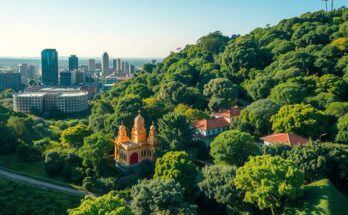In Lima, Peru, many residents live without access to running water, relying on infrequent supplies from tanker trucks. Over 635,000 individuals in the city face such hardships, exacerbated by inadequate urban planning and environmental concerns. Wealth disparities are starkly visible, with wealthier neighborhoods enjoying ample water access, highlighting the urgent need for systemic change.
In the parched hills of Lima, Peru, running water remains a distant aspiration for many residents who rely on tanker trucks for their supply. Lima, the second largest city in a desert globally, accommodates over 10 million individuals. Despite having three rivers and a water table, the city seldom receives rainfall, exacerbating water accessibility issues.
The National Institute of Statistics and Computer Science reports that over 635,000 people in Lima are without running water, with many residing in informal settlements that lack essential water and sewer services. In San Juan de Miraflores, water is delivered weekly, and often less, by blue tanker trucks, which leave water in unsanitary drums along dusty roads.
Residents like Catalina Naupa, 59, describe their struggles with water quality, suffering from health issues attributed to contaminated water. Their water supply diminishes in winter as muddy roads hinder access for the trucks, forcing residents to limit their water use for washing and other necessary tasks. Sedapal, the city’s water utility, provides approximately 30 liters of water per person daily, significantly below the UN’s recommended minimum of 50-100 liters.
Experts like Jeremy Robert warn of potential water rationing due to climate change affecting water levels and river flows. Antonio Ioris, a geography professor, notes that the underlying issue stems from insufficient urban planning and poverty in rural areas, which drives migration to the city.
In some neighborhoods, concrete staircases and barriers indicate economic disparities within Lima. The costly water supply forces poorer residents to pay six times more than those connected to the utility grid. The stark contrast becomes evident at a dividing wall, which separates impoverished areas from wealthier neighborhoods like Santiago de Surco, where residents enjoy abundant water supplies and green spaces. Cristel Mejia, a local soup kitchen operator, highlights this disparity, stating that Surco feels “like another world.”
The water crisis faced by impoverished districts in Lima highlights profound disparities in resource access and urban planning. Despite the city’s geographic advantages, vast portions of the population live without reliable water supply due to systemic issues and lack of infrastructure. Immediate action is needed to address these inequalities and ensure that all residents can access the essential resource of clean running water.
Original Source: www.france24.com




